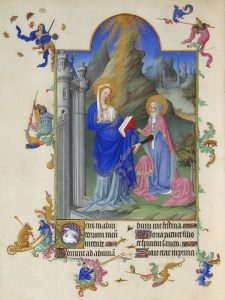
His Eminence, Vincent Cardinal Nichols re-consecrated England and Wales to the Immaculate Heart of Mary at Westminster Cathedral. Today’s Marian consecration renews the original offering made by Cardinal Bernard Griffin on July 16, 1948.
The prayer, in part, read,
“We consecrate ourselves forever to you and to your Immaculate Heart, Our Mother and Queen: that your love and patronage may hasten the triumph of the Kingdom of God and that all nations, at peace with one another and with God, may proclaim you blessed and with you may raise their voices to sing the everlasting Magnificat of glory, love and gratitude to the Heart of Jesus, where alone they can find truth and peace.”
Sadly, across the country there was a Freemasons ceremony held in Canterbury Cathedral to commemorate the 300th anniversary of Freemasonry in the UK with the establishment of the first Grand Lodge in London. Permission was given by Archbishop Justin Welby. The ceremony was granted following the Freemasons gave Welby a $300k gift. The Dean of Canterbury Cathedral, the Very Rev. Robert Willis, presided at the Masonic service. Prince Edward, the Duke of Kent who is the Grand Master of the Freemasons was in attendance.
The truth of the matter is that freemasonry is irreconcilable with Catholicism, that is, Christians in general. The Church has consistently stated that a Catholic cannot belong to Masonry because membership in the organization because contradicts sacred Scripture and it worships man, not the Triune God. No counterfeit Christians are allowed. If the teaching Scripture and theology is true for Catholics it is true for all Christians. As one person said, “Our poor Church reeks of the stench of Satan brought into us by these evil lovers of Satan.” What Welby allowed is clearly wrong.
Why mention this heinous act in the context of such a beautiful gesture of oblation? The Canterbury Cathedral was the Mother-Church of All England from 597 until the death of Cardinal Reginald Pole, in 1558, the last Catholic Archbishop. Canterbury was known as the heart of the Catholic Church in England, a true shrine of Christianity because it housed the shrine of St Thomas Becket (+1170) and other saints, and the home of the now dissolved Abbey of St Augustine.
In a homily Nichols said:
“Devotion to the Immaculate Heart of Mary is a way for us to say ‘yes’ too, ‘yes’ to an attitude of heart that accords with Our Lady’s, and so opens up pathways, fresh and sure, towards Christ. This is why today we consecrate ourselves, our entire lives, our country to the Immaculate Heart of Mary, so we can always be saying ‘Yes’ to the Lord, with all our heart with all our will, from the centre of our being. Only Mary can teach us how to do this.
To cultivate such an attitude of heart is, to put it mildly, the work of a lifetime. We need practical support along the way. And that is where another aspect of the message of Fatima can be so helpful. The recitation of the Rosary… I learned to pray the Rosary as a child at home. As a family we prayed the Rosary together. I can still see the pattern of the chairs at which we were kneeling. Concentrating on the prayer was not always easy but we were trying. That’s what counts. How much I wished that every family finds time to pray together. What a difference that would make! And this prayer is needed… ‘The heart open to God… is stronger than guns and weapons of every kind.’ So wrote the future Pope Benedict. They are words that we do well to make our own as, this year, a second century of the story of Fatima begins.
Our Lady, Queen of Peace, pray for us; Our Lady of Fatima, pray for us.” Amen!







